

💧 What is Squalane?
Squalane is a hydrogenated derivative of squalene, a lipid naturally found in human sebum. Unlike squalene which is prone to oxidation squalane is chemically stable, making it a preferred emollient in skincare formulations. It is colorless, odorless, non-comedogenic, and mimics the skin’s own lipids, offering excellent hydration and barrier support.
Squalane can be derived from
- 🦈 Shark liver oil (historical source, now ethically avoided)
- 🌿 Plant-based squalene from olives and sugarcane these are hydrogenated to produce squalane.
Olive oil–derived squalene was one of the first sustainable sources used in cosmetics. More recently, sugarcane fermentation (e.g., via _Saccharomyces cerevisiae_) has gained popularity for its scalability and vegan appeal.
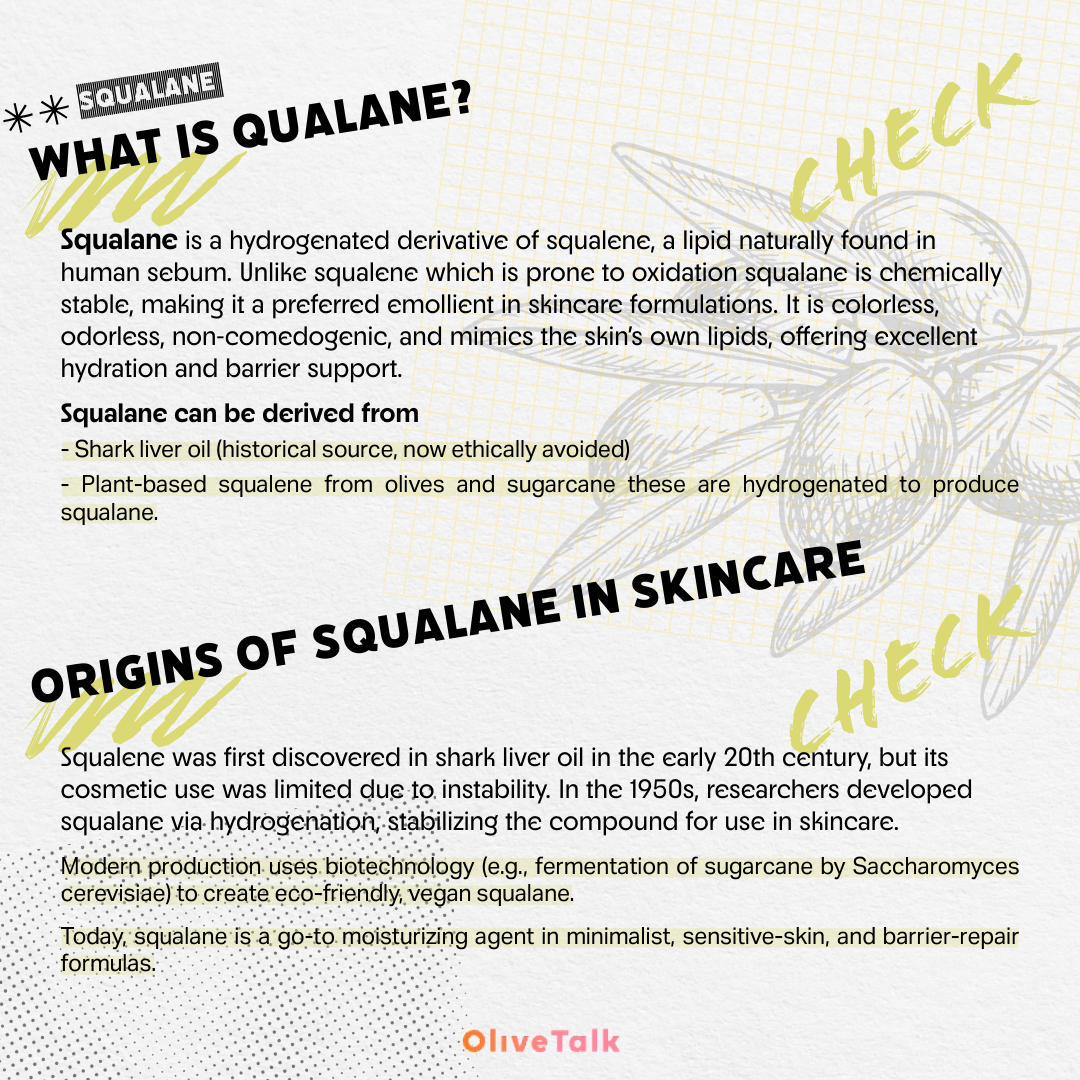
🌿 Origins of Squalane in Skincare
Squalene was first discovered in shark liver oil in the early 20th century, but its cosmetic use was limited due to instability. In the 1950s, researchers developed squalane via hydrogenation, stabilizing the compound for use in skincare.
Modern production uses biotechnology (e.g., fermentation of sugarcane by Saccharomyces cerevisiae) to create eco-friendly, vegan squalane.
Today, squalane is a go-to moisturizing agent in minimalist, sensitive-skin, and barrier-repair formulas.
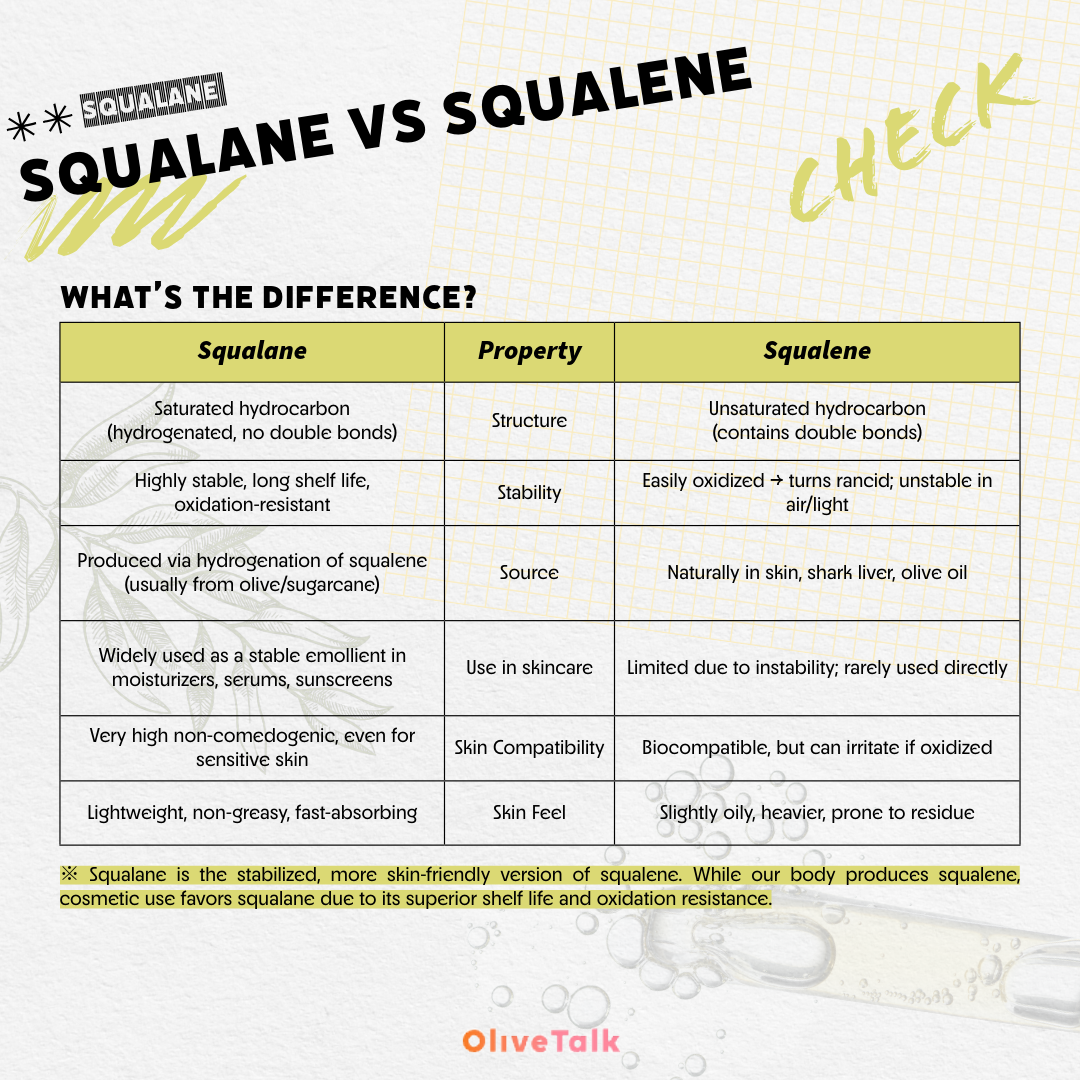
🔍 Squalane vs Squalene (What’s the Difference?)
(Property / Squalene / Squalane)
Structure / Unsaturated hydrocarbon / Hydrogenated (saturated) hydrocarbon
Stability / Prone to oxidation / Highly stable and shelf-stable
Source / Naturally in skin sebum, shark liver, olive oil / Derived from squalene via hydrogenation
Use / Limited in cosmetics due to instability / Widely used in skincare as a stable emollient
Skin Compatibility / High / Very high (non-comedogenic, gentle)
※Squalane is the stabilized, more skin-friendly version of squalene. While our body produces squalene, cosmetic use favors squalane due to its superior shelf life and oxidation resistance.
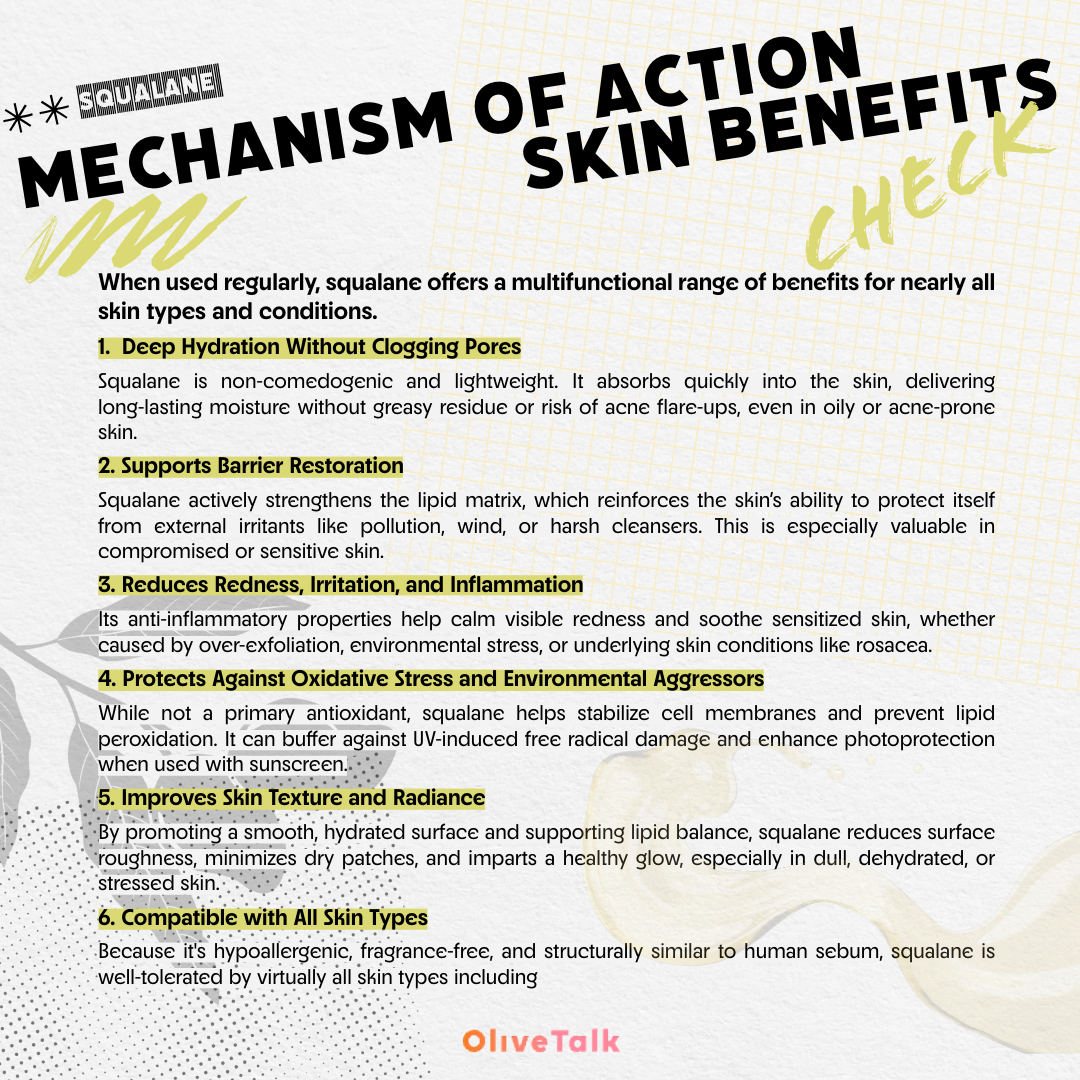
🔬 Mechanism of Action I (Biomimetic Moisturization)
Squalane is described as a biomimetic emollient, which means it closely mimics the skin’s own natural lipids particularly squalene, a compound naturally found in human sebum.
Once applied, squalane integrates seamlessly into the stratum corneum, which is the outermost layer of the epidermis. Here's how it works in greater detail
1) Replenishes Lost Lipids
With age, stress, or over-cleansing, the skin’s lipid layer becomes depleted. Squalane restores these missing lipids, helping rebuild a healthy, resilient barrier that retains moisture and protects against irritants.
2) Improves Skin Suppleness and Flexibility
By softening the intercellular matrix and enhancing the fluidity of the lipid bilayer, squalane allows the skin to remain soft, smooth, and elastic, reducing the appearance of dryness or dullness.
3) Prevents Trans-Epidermal Water Loss (TEWL)
Squalane creates an occlusive but breathable film on the skin’s surface. Unlike heavy occlusives like petroleum jelly, it helps seal in moisture without suffocating the skin, making it ideal for daily hydration.
4) Enhances Ingredient Penetration Without Barrier Disruption
Because squalane is skin-identical and non-irritating, it helps carry active ingredients (like retinol or vitamin C) deeper into the skin without disturbing the barrier function, which is crucial for sensitive or acne-prone users.
💡 Mechanism of Action II (Skin Benefits)
When used regularly, squalane offers a multifunctional range of benefits for nearly all skin types and conditions
1) Deep Hydration Without Clogging Pores
Squalane is non-comedogenic and lightweight. It absorbs quickly into the skin, delivering long-lasting moisture without greasy residue or risk of acne flare-ups, even in oily or acne-prone skin.
2) Supports Barrier Restoration
Squalane actively strengthens the lipid matrix, which reinforces the skin’s ability to protect itself from external irritants like pollution, wind, or harsh cleansers. This is especially valuable in compromised or sensitive skin.
3) Reduces Redness, Irritation, and Inflammation
Its anti-inflammatory properties help calm visible redness and soothe sensitized skin, whether caused by over-exfoliation, environmental stress, or underlying skin conditions like rosacea.
4) Protects Against Oxidative Stress and Environmental Aggressors
While not a primary antioxidant, squalane helps stabilize cell membranes and prevent lipid peroxidation. It can buffer against UV-induced free radical damage and enhance photoprotection when used with sunscreen.
5) Improves Skin Texture and Radiance
By promoting a smooth, hydrated surface and supporting lipid balance, squalane reduces surface roughness, minimizes dry patches, and imparts a healthy glow, especially in dull, dehydrated, or stressed skin.
6) Compatible with All Skin Types
Because it's hypoallergenic, fragrance-free, and structurally similar to human sebum, squalane is well-tolerated by virtually all skin types including
- Sensitive skin
- Acne-prone skin
- Rosacea-prone skin
- Mature or dry skin
- Post-procedure skin (e.g., after lasers or peels)
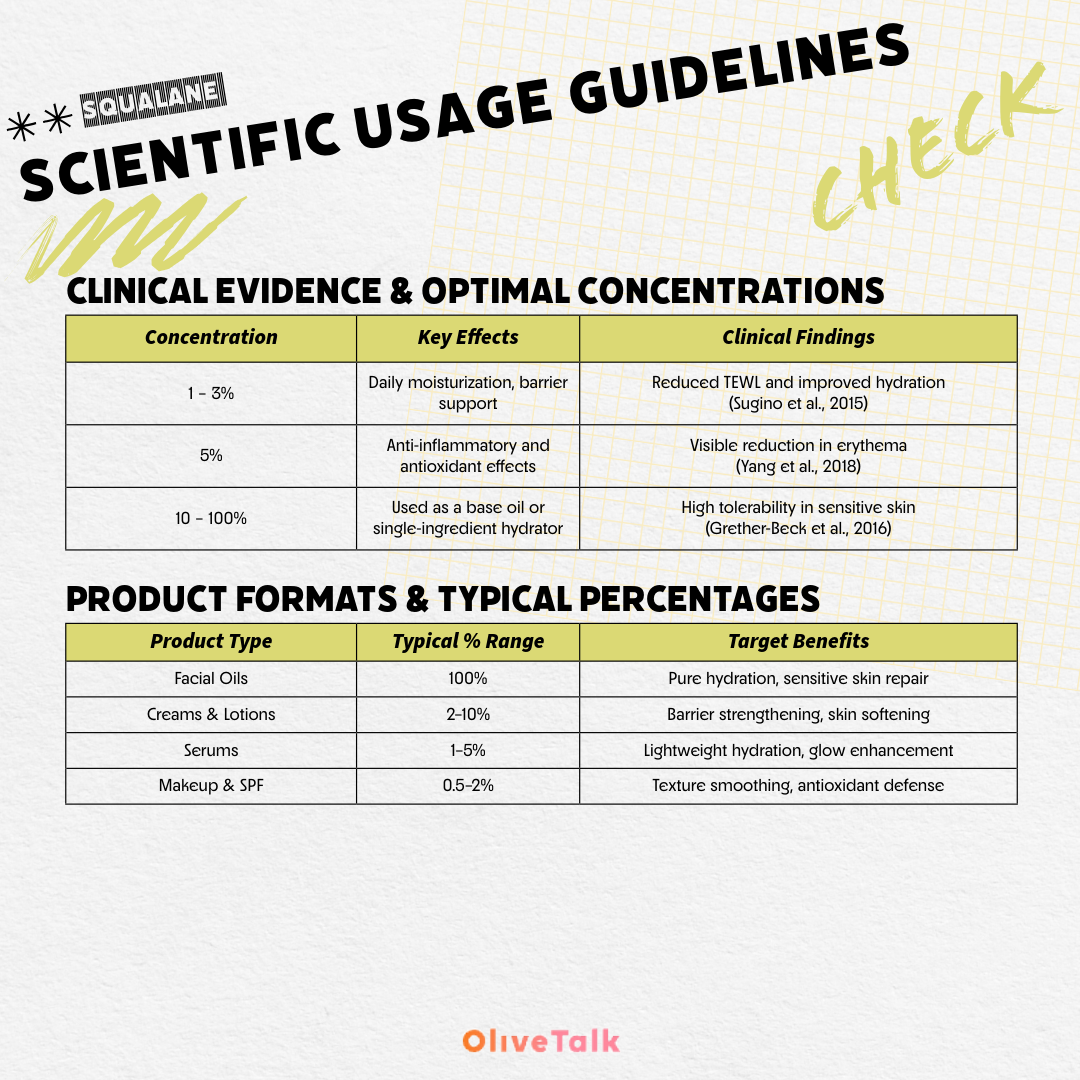
🧪 Clinical Evidence & Optimal Concentrations
(Concentration / Key Effects / Clinical Findings)
1–3% / Daily moisturization, barrier support / Reduced TEWL and improved hydration (Sugino et al., 2015)
5% / Anti-inflammatory and antioxidant effects / Visible reduction in erythema (Yang et al., 2018)
10–100% / Used as a base oil or single-ingredient hydrator / High tolerability in sensitive skin (Gret-her-Beck et al., 2016)
🍉 Product Formats & Typical Percentages
(Product Type / Typical % Range / Target Benefits)
- Facial Oils / 100% / Pure hydration, sensitive skin repair
- Creams & Lotions / 2–10% / Barrier strengthening, skin softening
- Serums / 1–5% / Lightweight hydration, glow enhancement
- Makeup & SPF / 0.5–2% / Texture smoothing, antioxidant defense
※ Squalane doesn't just moisturize it intelligently reinforces what the skin already knows how to do.
It’s one of the rare ingredients that delivers hydration, repair, comfort, and elegance, all in one non-irritating molecule.
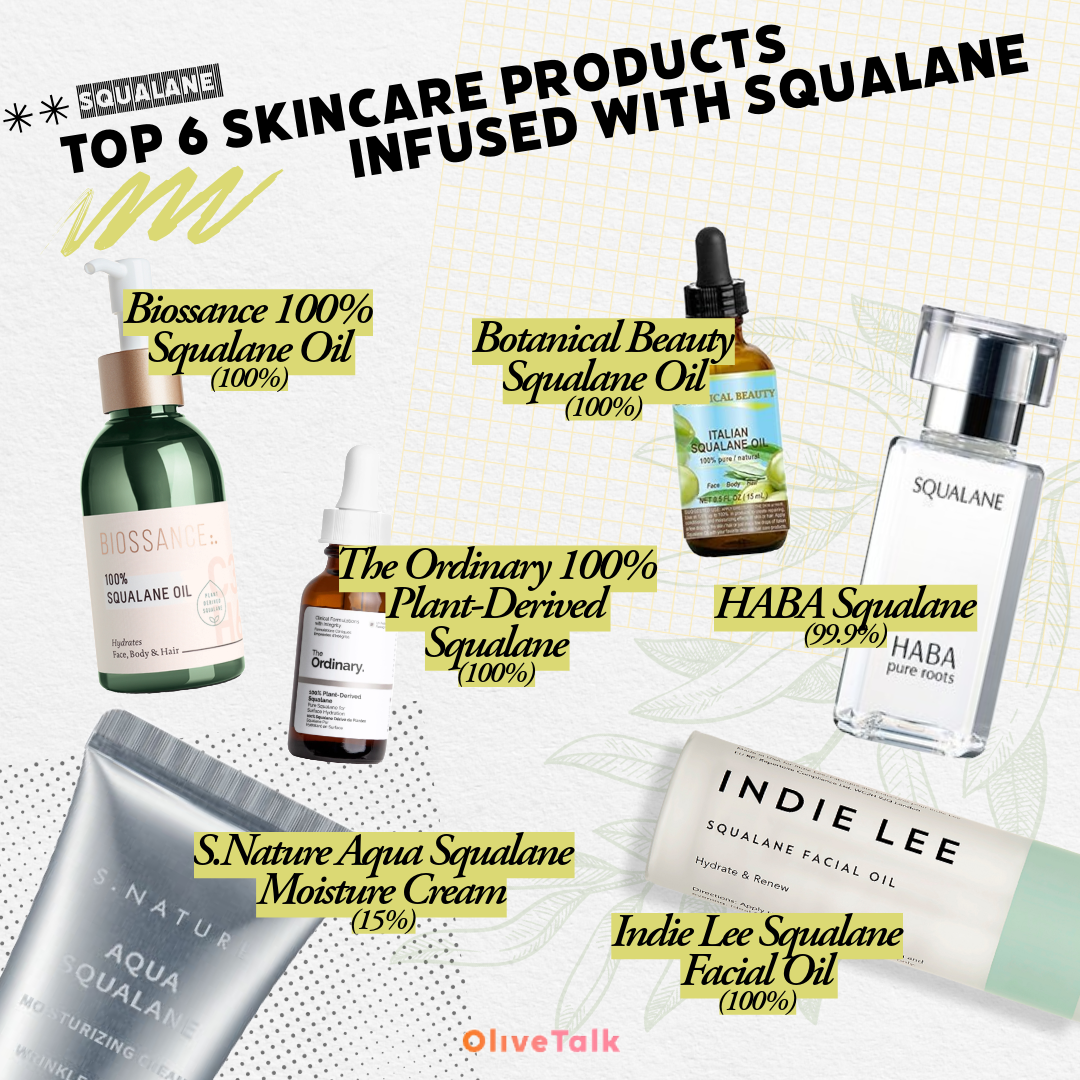
<Top 6 Skincare Products Infused with Squalane>
1. Biossance 100% Squalane Oil
Squalane Content : 100%
Country : US
2. The Ordinary 100% Plant-Derived Squalane
Squalane Content : 100%
Country : CA
3. Indie Lee Squalane Facial Oil
Squalanel Content : 100%
Country : US
4. Botanical Beauty Squalane Oil
Squalane Content : 100%
Country : IT
5. HABA Squalane
Squalane Content : 99.9%
Country : JP
6. S.Nature Aqua Squalane Moisture Cream
Squalane Content : 15%
Country : KO
🏃♂️ Historical Note: From Deep Sea to Clean Beauty
Originally derived from deep-sea shark liver, squalene was considered a miracle lipid in early 20th-century medicine. However, ethical and environmental concerns led to a sharp industry shift toward plant-derived and biotech squalane.
With growing demand for clean, non-irritating moisturizers, squalane has become a hero ingredient in both clinical and green beauty segments.
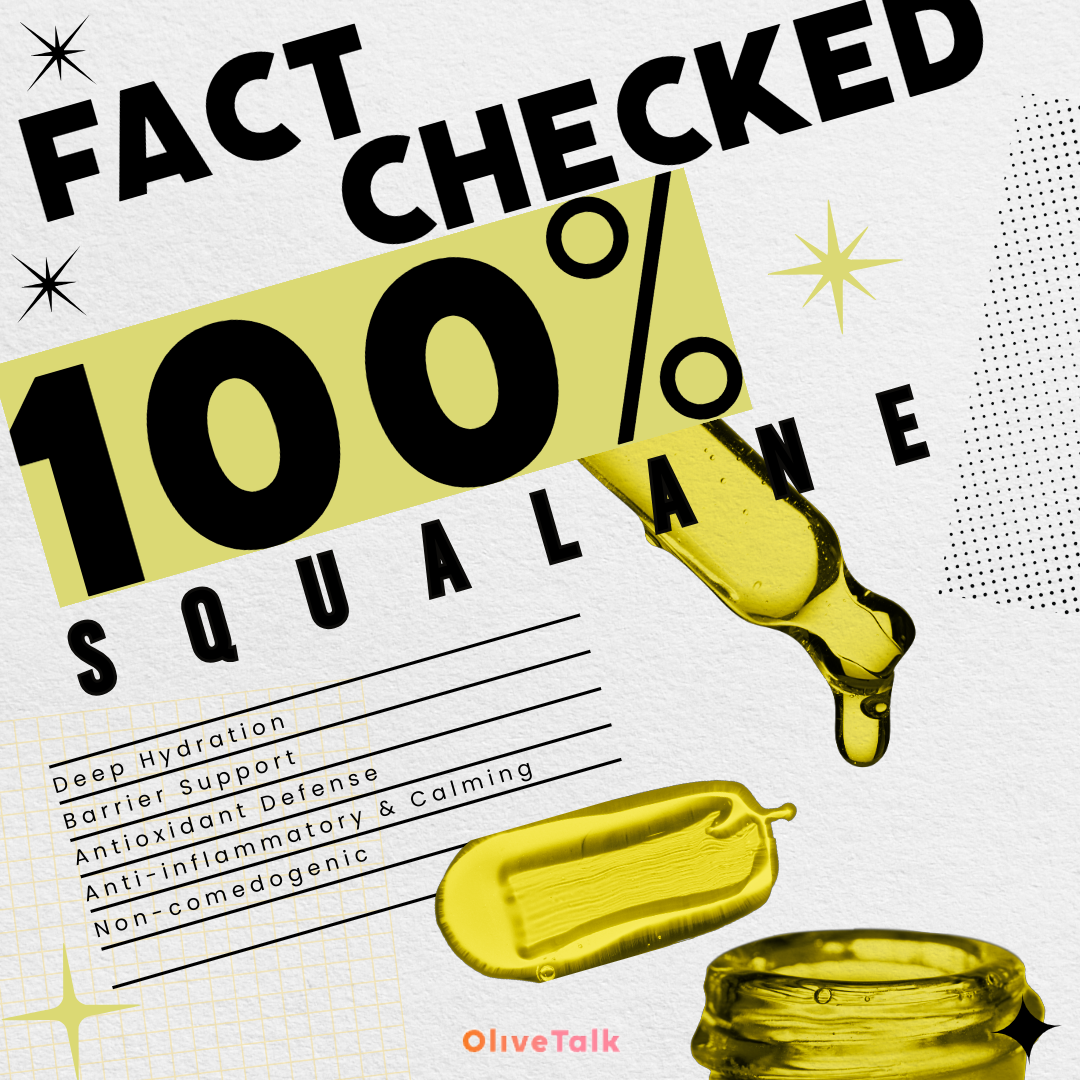
📚 References
Sugino, M. et al. (2015). Evaluation of skin moisturization and barrier function improvement by squalane application. Journal of Cosmetic Science, 66(1), 59–67.
Yang, J. H. et al. (2018). Anti-inflammatory effects of squalane on UV-induced skin damage. Journal of Investigative Dermatology, 138(6), 1321–1329.
Grether-Beck, S. et al. (2016). Squalane's role in barrier function and photoprotection. Dermato-Endocrinology, 8(1), e1248324.
Shah, V. et al. (2020). Comparative safety and efficacy of plant-derived vs. shark-derived squalane. Clinical, Cosmetic and Investigational Dermatology, 13, 155–162.
Pappas, A. (2009). Epidermal lipids and skin health. Journal of Lipid Research, 50, S165–S169.
 39Comments
39Comments
That hydrogenation step is crucial for stability. Also big yes to sugarcane-derived being the future - shark liver oil belongs in history books, not our skincare.
Is it gonna bring me that distinguishable results depending on the level of content?